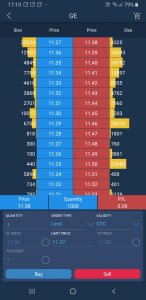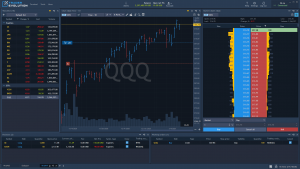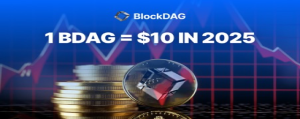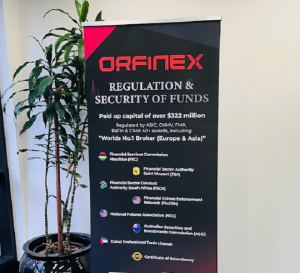When FX brokers finally ditch the affiliate model, the sky will be the limit
We take a very good look at why brokerages need to move away from the affiliate and revenue share model, and embrace proper multi-asset product ranges via platforms that operate via transparent and sustainable methods. This now exists, and will transform your results and client opportunities

The latest developments are key to being able to retain and engage not only new retail customers, but also to stand out from the vast number of brokerages, technology providers and tertiary services that make up the retail industry.
With all of this avant-garde ethos and the constant push for novelty, how many of us actually look back to where the retail FX industry began?
In May this year, I will celebrate my 30th year in the electronic trading industry, and it most certainly feels like a very long time ago since I spent my apprenticeship at British Telecom in the early 1990s programming PBX switches for middleware systems that connected banks to the electronic markets of the time, and equally as long since configuring my first Cisco switch that transmitted data along a network which was terminated by 10 bit 2 bayonet connectors, which provided the basis for deployable applications for trading desks, built on Windows NT3.51 which is now so archaic that it bears no resemblance to today’s topography.
Indeed, the retail FX business over the last quarter of a century has made such a leap forward that comparing its early stages to the sophistication of today is like comparing a Boeing 787 Dreamliner to a horse & cart.
Perhaps because of the constant drive toward innovation, very little is mentioned about the origin of retail FX, and how the vast array of global FX companies actually came to be in the first place. It was one company, long since consigned to the history books, that encapsulated the movement to bring institutional FX trading into the hands of the retail trader.
In the early days of retail FX, much of which was established by former executives within the institutional sector, the pioneering efforts looked extremely promising, and have risen to become today’s stalwarts, with their own proprietary trading systems and in many cases public listings on prestigious stock exchanges in London and New York.
Others who paved the way, have moved onto other things. An example is Josh Levy, a charismatic and enthusiastic industry professional whose verve and vigor is just as present today as it was in the late 1990s when he and his colleagues pioneered, along side a handful of others, this fast-paced global business.
Founded in 1999, Matchbook FX was the world’s first open and inclusive internet ECN for FX trading, available to all willing FX trading participants including hedge funds, CTAs, banks, corporations and, uniquely at the time, retail FX traders as well.
Matchbook FX was initially conceived by Daniel Uslander and Ron Comerchero, both of whom were commodity futures and equities traders, and former Goldman Sachs New York FX trader Josh Levy. Mark Smith of the Florida based equities-trading technology firm NexTrade ECN also joined their efforts and enlisted Nextrade to contribute technological know-how.
Several months later, GlobalNetFinancial.com, a NASDAQ-traded financial news and technology firm, bought in as the third major equity partner in a three-way joint venture.
As one of the earliest providers of open-access FX e-trading, Matchbook FX received considerable acclaim for its efforts to instigate change and level the playing field in the insular, closed, clubby and highly profitable domain of interbank Forex dealing, likely to the chagrin of the major international money center banks. Matchbook FX was recognized in 2000 as one of Silicon Alley Reporter Magazine’s “12 to Watch”, its annual listing featuring top internet companies.
During the mid-2000s, however, this direction was somewhat thwarted by the influx of new ‘brands’ which had no origins in the electronic trading or financial software industry, instead hailing from the affiliate marketing sector, enabled by the arrival of the MetaTrader 4 platform in 2004.
These brands were completely unlike the genuine electronic trading pioneers that brought a full set of instruments to the astute traders of America and Europe. They did not contemplate the live market place of various asset classes, listed derivatives or managed funds, and instead brought the revenue sharing lead-churners to the market. Absolutely no software development, equities and futures trading expertise or understanding of live markets and diversified product ranges were needed.
Around it grew a huge affiliate marketing network, and a huge deluge of offshore, unregulated brands who were simply a sales floor out to get first time deposits from recycled ‘leads’ and consider that to be their profit.
Today, the retail sector appears to be somewhat more developed than it was back then, but the same principles apply. At the end of the first decade of the Millennium, a series of specialist companies were established in order to bring real market pricing and connectivity to retail brokers via the MetaTrader platform, which has served very well until today.
There is a matter of importance that is being overlooked, however, and that is the basic structure of this industry and its inability to flourish further unless a genuine multi-asset product range is offered via proper software which is licensed and operated via proper licensing agreements as software in other industries does.
The need to expand into the asset management and hedge fund sector is quite clear, and has been for some time, however the entire system of components that supports the majority of the retail electronic trading business is built upon affiliate agreements and revenue share schemes, none of which belong in our industry.
Even the companies which provide market connectivity operate on a volume and revenue share basis.
To expand into the equities, futures and listed derivatives sector, a proper approach is required.
Today, FinanceFeeds spoke to Roman Nalivayko, CEO of TraderEvolution Global LTD, who explained that his company’s remit is to approach the listed derivatives, equities and futures brokerages, as well as those wishing to operate in that market segment.
Mr Nalivayko’s perspective is that software companies that provide trading systems to brokerages across the entire spectrum of the electronic trading industry should operate on a fixed fee basis.
“Our solution is aimed primarily at brokerages which operate in the listed derivatives sector” said Mr Nalivayko.
“In order to provide the correct solution for futures and equities traders, our software is provided to brokers via a flat fee, therefore we do not capitalize on volume” he said.
“On average, our muti-asset projects pay between 10,000 and 15,000 euros per month as a software licensing fee for our platform, taking into account different connections to different venues and market data providers. The cost is also dependent on the front end platform solution that brokers choose, whether it is mobile, web, or a desktop platform for Microsoft Windows or Apple MacIntosh” said Mr Nalivayko.

Importantly, the TraderEvolution Global platform allows brokers to combine markets from different regions, with each specific requirement, via one platform thus allowing ETFs, equities, futures, options as well as CFDs and FX products to be traded from one account, thus brokers can target a wide audience of clients representing different generations and different trading experience.
Brokers can build their own panels and widgets across all front ends which appear as a native part of the platform, therefore making it vendor unique, which is important in today’s world of identical off-the-shelf platforms that struggle to engage high net worth traders or multi-asset brokerages.
It is encouraging to see platforms of this nature coming into the retail electronic market place, as it allows FX firms and multi-asset brokerages o elevate their business model and attract the exchange traders who are far more stable and well capitalized than risky spot FX traders, as well as bring on board high quality traders instead of seek out endless small-deposit novices who need endless support and blow their account after a day, only then to be approached by several other similar spot FX brands via lead buying exercises.
Mr Nalivayko made a very important point in that “Currently we charge no license fee, because we don’t want price to become an issue for brokers wnating to go down the multi-asset route with our solution. We understand that it can be very interesting for FX brokers but we are more interested in brokers with Multi-asset exchange traded products. FX is a risky business and some brokers don’t stay in business for long, so it makes sense to charge a one time license to protect from brokers that go bankrupt quickly.”
That should be enough of a signal for FX firms to take stock and move to a multi-asset solution to stabilize and sustain their businesses.
The reality is that in today’s retail FX industry, where the end users have become ever more sophisticated and can absolutely tell if a broker is surviving from their deposited capital instead of connecting to a live market, which has exponentially improved the standards in terms of execution of trades within many medium sized retail brokerages, however it has left a conundrum, that being the completely outmoded marketing model which is not compatible with the commission business that brokerages offering genuine market execution now provide.
As the infrastructure of OTC electronic trading firms becomes the increasing subject of regulatory remit as defined by the pan-European MiFID II which uses the coercive powers of the European Commission to ensure all market infrastructure and execution policies are standardized across multiple jurisdictions, brokers find themselves faced with high expectations from extremely analytical traders in the most high quality regions for electronic markets, and difficulty differentiating themselves from other retail brokerages using the same third party platforms.
Most importantly, however, aside from the 1231 near-identical MetaTrader 4 retail entities that currently exist, is that the execution model required nowadays means that brokers should do what brokers are supposed to do – charge a commission for processing trades to their liquidity provider and provide their clients with an aggregated price feed consisting of prime of prime liquidity from Tier 1 banks and non-bank market makers.

This is excellent for customers if conducted correctly, but means that brokers pay a dollar-per-million charge for their liquidity management system and market liquidity, and can charge a commission rather than have the vast margins that had been the case within so many smaller brokerages several years ago which resulted from the profit and loss model that many operated.
The brokers that came to market in the middle of the last decade with a profit and loss model (living from client losses) were never able to gain market share among quality jurisdictions where the established competition was already operating a good quality trading environment for clients – and rightly so, nobody laments the passing of firms which do not have their customers’ best interests in mind – instead coming from the affiliate marketing and media buying sector.
Now, many of those entities have adopted proper execution, facilitated by the market infrastructure specialists and prime of prime brokerages that serve the retail FX industry, but their marketing techniques in many cases remain in the mid 2000s, and in the retail FX industry, the mid 2000s is akin to the dark ages.
The fact of the matter is that high CPA of today requires ambitious goals when it comes to the client base, which means having enough available funds to embark on large marketing operations and have a unique value proposition to lower the CPA.
The quest for differentiation may also lead to the in-house development and maintenance of proprietary software despite the obvious costs because in addition to promoting their own platform to their clients and increasing the rate of client retention as they grow accustomed to an environment they will not likely find elsewhere, these brokers can also reduce their costs or even make profit out of offering white labeling solutions to other firms.
Simply, buying leads and hoping for sales calls to convert them into live clients is futile.
This is because the same leads are being recycled between brokers, the same leads are being targeted by firms offering similar propositions, and the media buying cost vs the actual conversion rate is as low as 1% in the retail sector.
Hence, one-off retail clients from non-aligned countries, with very little capital and in some cases no chance of being able to satisfy compliance requirements are depositing between $500 to $1000 as a first time deposit, and the cost of acquiring the customer is now past $1500, with a lifetime value of just three months.
Whichever way that is viewed, it is a loss.
One of the reasons for the high cost and lack of efficiency is that, according to two London-based media analytics firms that have provided digital marketing data to FinanceFeeds, the potential customers are in many cases no longer potential customers because these are leads that have been to over ten brokerages, hence the same people are being bombarded by the same calls from almost identical companies, and many have lost their initial deposit with the first company, and are therefore now worn down by the repetition of calls.
The sooner brokerages which have set up every aspect of their enterprise via an affiliate and revenue share model, from platform to integration solution to the way they acquire customers realize that this is not the way forward, the more successful and sustainable they will be.
The subject matter and the content of this article are solely the views of the author. FinanceFeeds does not bear any legal responsibility for the content of this article and they do not reflect the viewpoint of FinanceFeeds or its editorial staff.









